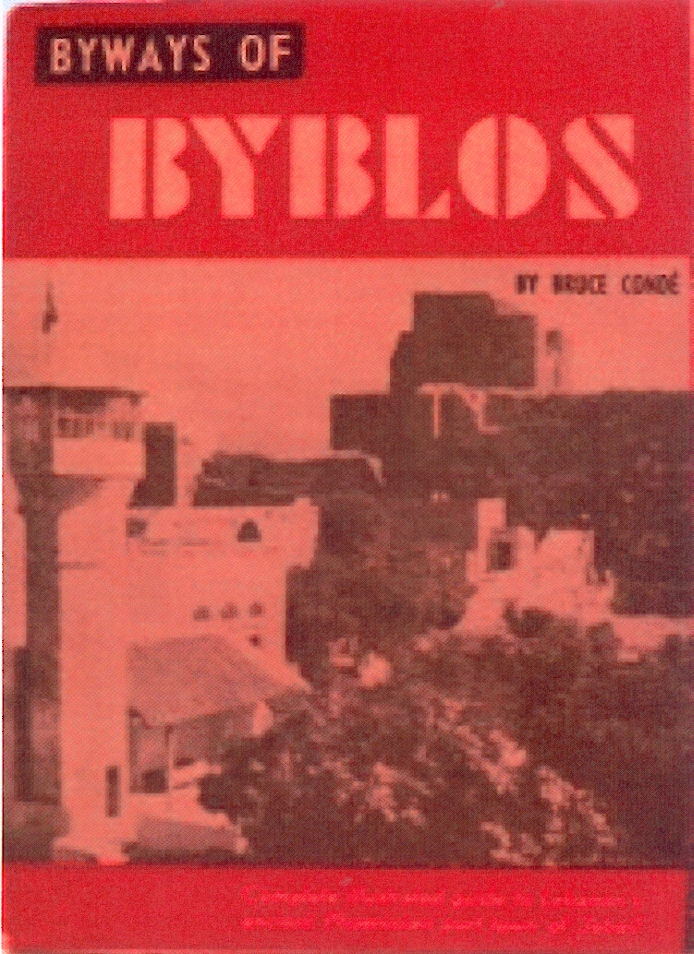The cover has the return address of Maj. Bruce Condé, Counter Intelligence Command (C.I.C.). General Headquarters, U.S. Army Post Office APO 500, Tokyo, Japan. It is franked with the B.C.O.F. (British Commonwealth Occupation Force)/ JAPAN/ 1946 overprint on Australian definitive stamps (a pair of the orange ½ d, and a strip of 3 brown-purple 1d ), tied by AUST. ARMY P.O./ 214 (Tokyo, Japan) on 8 OC 48, pre-first day of issue on 11 October 1948. It was addressed to an unknown Private Wilkins, Prahan, Victoria, Australia. The reverse was not seen (Figure 1).
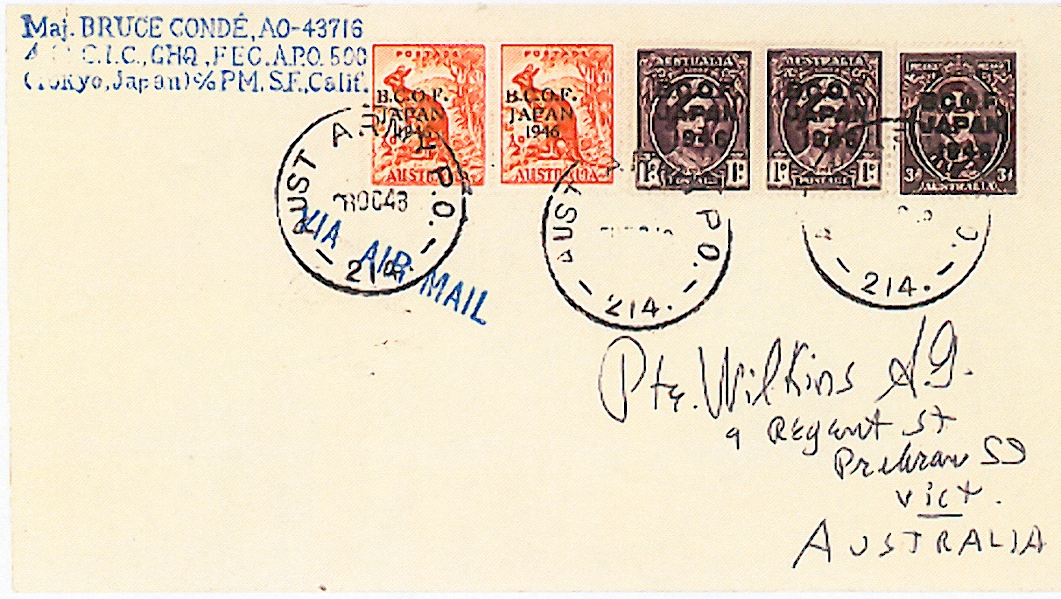
Bruce Chalmers (Bruce Alfsono Bourbon de Conde), officer, philatelist and royal pretender, born California 5 December 1913, died Tangier 20 July 1992. A royalist, philatelist, Muslim and former US officer, Bruce Conde (alias Alfonso Yorba, Hajji Abdurrahman and General Bruce Alfonso de Bourbon, Prince of Conde) was a prominent figure in monarchist and Arabist circles. Though his origins are uncertain, it seems that he was first called Chalmers, having been orphaned and adopted in California, where he was born in 1913. Later, he left his foster-parents and called himself ‘Yorba’ and then ‘Conde’, the latter being the name of his grandmother’s family, through whom he claimed descent from France’s erstwhile kings.
After reading Spanish at the University of California (UCLA), he entered the US armed forces. His wartime service involved counter-intelligence work and yielded many adventures in Europe and Japan. But his heyday did not begin until 1958 when he moved to the northern Yemen. His love of that land, then still a feudal kingdom, began in his boyhood when he wrote to its fearsome ruler, Imam Ahmad, asking for a pen-friend with whom to swap stamps. A reply came from the secretary of the Imam’s son: ‘His Majesty has commanded me to be your friend.’ Thus began the association that ultimately secured his appointment as director of Yemeni propaganda and postal affairs.
His philatelic skills aroused the jealousy of the Minister of Communications, who brought about his deportation amid charges of espionage. An adroit survivor, Conde moved to what is now the United Arab Emirates, where he established Sharjah’s first post office and designed its stamps. On one of these he displayed a map of Sharjah with generously extended frontiers, a gesture that charmed the ruler but enraged his neighbours.
In 1962 Conde returned to the Yemen following a realignment of local forces. The recent death of Imam Ahmad had thrown the country into turmoil. The new ruler, Muhammad al-Badr, was opposed by rivals in his family, while the entire dynasty was threatened by republican opposition backed by President Nasser of Egypt. Conde proved his loyalty by fighting alongside the royalists in a protracted guerrilla war.
Conde rose to the rank of a Yemeni general, he remained an enthusiastic philatelist and, as a Muslim convert and former Roman Catholic, advertised his ecumenism by issuing stamps bearing Vatican paintings of biblical episode in which Christian beliefs are compatible with Islam. A later stamp shows Conde seeking Vatican support for the Imam during Pope Paul VI’s pilgrimage to Jerusalem in 1964.
After the Republicans’ victory and the exile of the Imam in 1970, Conde settled in Spain, where he pursued his historical researches and acquired a former royal residence. In 1980 he moved to Morocco and four years later he adopted Alexis Dolgorouky, an alleged prince and author of a highly controversial book, Moi Petit-Arriere-Fils du Tsar. The Spanish press published lively accounts of these developments and of Conde’s marriage to Alexis’ mother, Princess (sic) Beatrice. Her father, declared Conde, was Volodar (king) of Ukraine and her grandmother Marie, daughter of Nicholas II of Russia.
Curiously, these claims attracted supporters even within some royal houses. Ill, stateless and apparently unable to leave Morocco, he felt alone in the drab Tangerine suburb where he was now living with another adopted son and his family. Later he had fallen out with that ‘son’ and with Alexis too. Albeit a kindly man, seeking love no less than admiration, Conde is accurately described in David Holden’s Farewell to Arabia: ‘He was an odd and slightly pathetic figure, somewhat out of his time and depth. Nervous, even in full flow, he seemed to belong nowhere and to be yearning romantically for the impossible.’ This paper was taken from the excellent paper on ‘Bruce Conde: Obituary’, from the website of Alan Rush, U.K.
Bruce Conde published more than 100 philatelic papers on Yemen stamps from 1942-1991. In addition he published more than 100 philatelic papers on stamps of Japan, Jordan, Egypt, Lebanon, Syria, Palestine and the United Arab Republic. He had additional interests in a highly specialised Hawaiian collection and world-wide postal stationery.
Additional general and philatelic information was found on many websites, including the following: Conde emigrated toYemen, becoming a Yemenite citizen in 1958; in 1962 at the outbreak of the Yemen Civil War, he was called into the defense forces of his longtime friend the Imam. He rose through the ranks of Lieutenant Colonel to Major General in eight years of guerrilla warfare on virtually every front, at first against the Egyptians and eventually against the Republicans.
Because of his philatelic interests (he specialized in Yemenite Philately and postal history since 1931 and has been a published stamp writer since 1940), he was given the additional position of Adviser to the Ministry of Communications in 1962. Conde handled Royal Yemen postal services for the Imam since that date. Forewarned of the impending Saudi recognition of the Yemen Arab Republic in June 1970, Conde left for his summer home in Granada, Spain, with the Imam escaping on July 22 to London. A picture of Bruce Conde on the eleventh century Arab tower of his morisco house in Granada, with the Alhambra in the background, is seen in Figure 2.
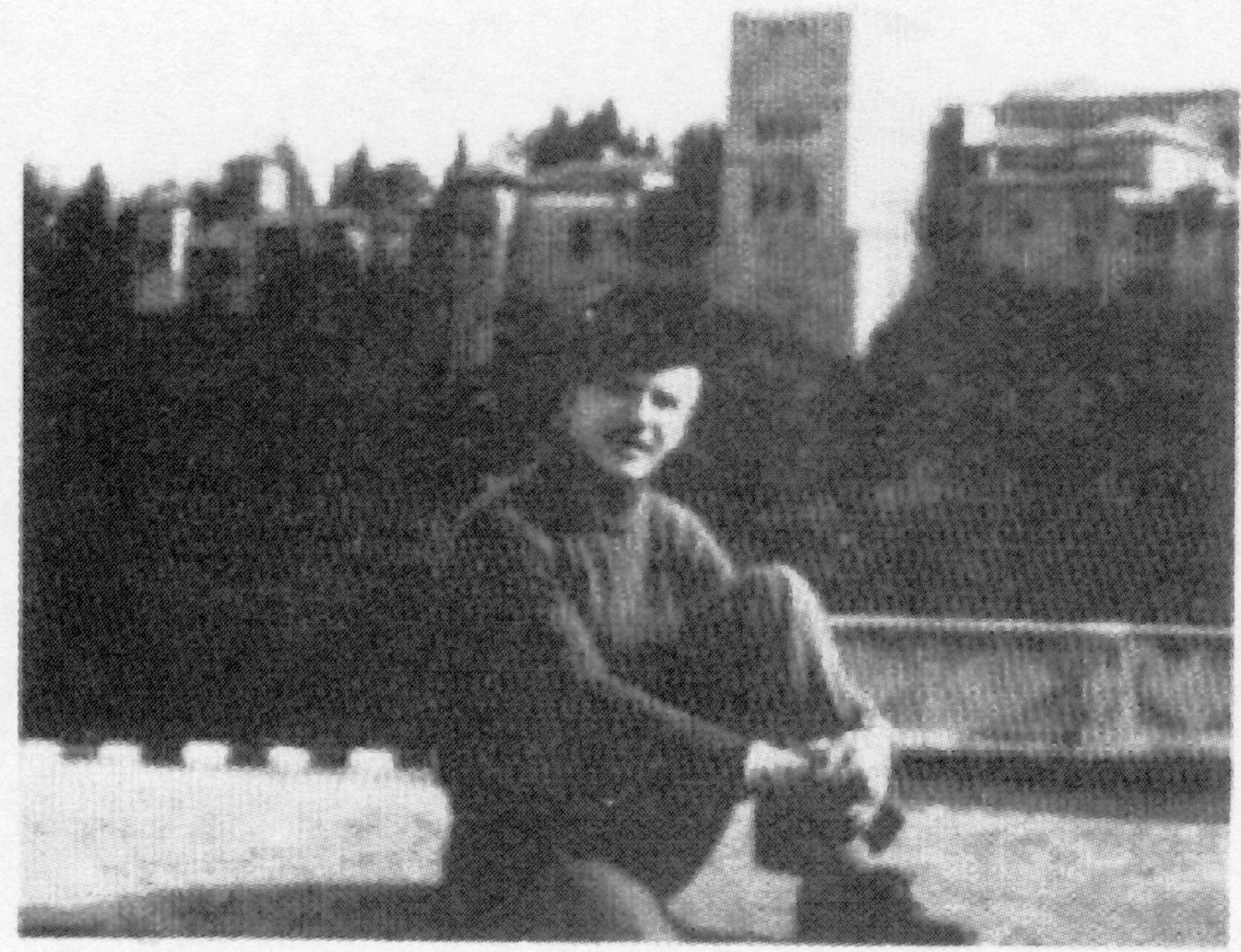
This rare Yemen Kingdom Consular official 10 Bogshas stamp with the lilac overprint of ‘YEMEN’ is from the private collection of Bruce Conde is Michel 57b is valued at 2,000 euros. It was on eBay, as well as Conde’s Life Membership in the American Philatelic Society, which is also seen (Figures 3 & 4).
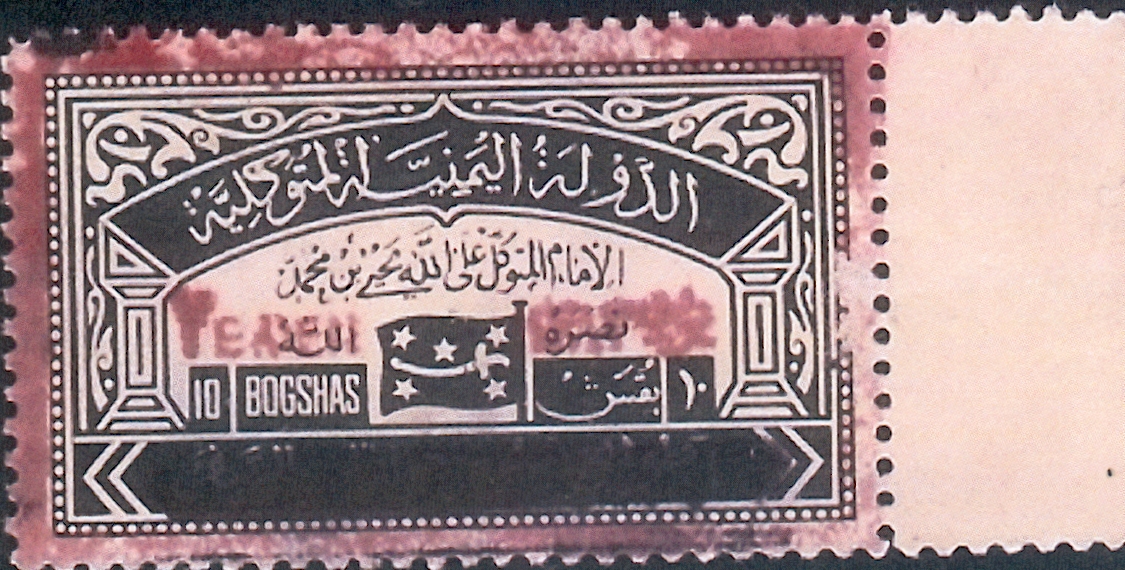
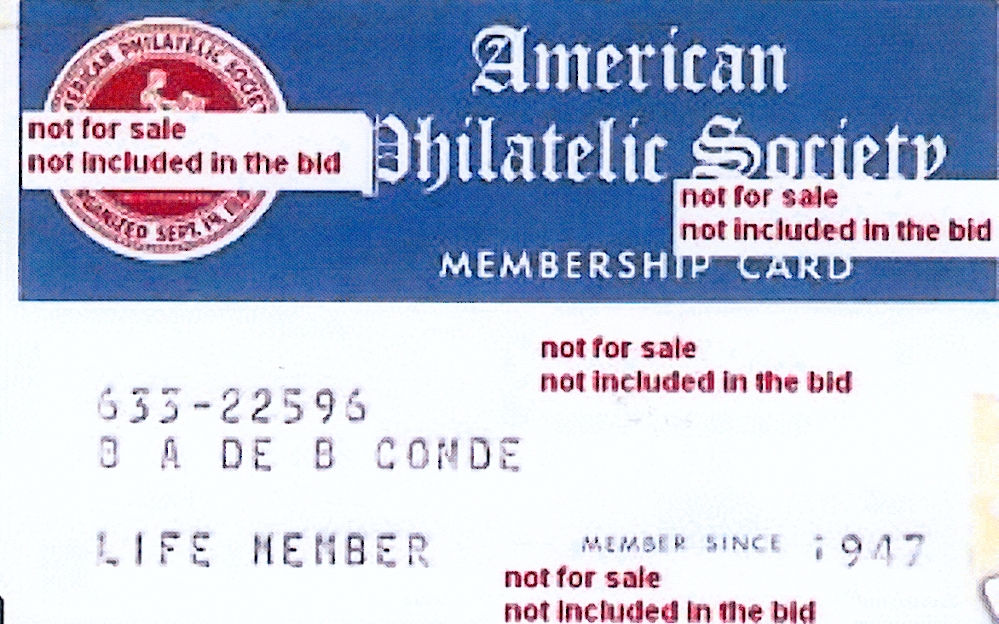
He was a scholar with many additional interests, including Yemen archeology, and he was the author of the book Byways of Biblos (1960) still considered an useful description for tourists in Lebanon (Figure 5).
